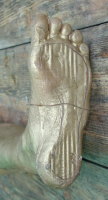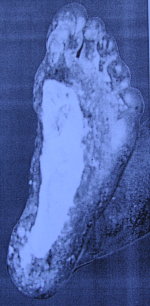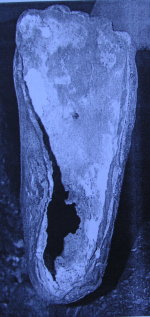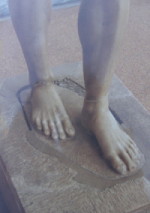Ephebo
This is a secret that has been kept for 2500 years so it is bound to shock.
The great classical tradition of ancient Greece is based on life-casting. I was shocked myself when I discovered this but the proof is beyond dispute as far as I am concerned. It is an unpalatable truth that we must learn to swallow or our culture is founded on a lie.
About the year 500 BC Greek sculpture took a great leap forward, up till that point it had been a provincial imitation of of a culture that had thrived in Egypt for more than 2000 years, reaching its zenith in about 1250 BC in the reigns of Akenaton and Tutunkarmon. The Greeks took the Egyptian tradition a huge step forward towards a more natural pose. The stiffly “at attention” pose gradually softened into the famous Greek contraposto. The Egyptians probably also stood around like this but they never used it in their art. The contraposto so favoured by us was not right for the Egyptians. So it was left to the Greeks to make this break-through. This boy by the sculptor Kritios is the most likely to have been the first. Clearly he is not an athlete, a warrior or a god but an Ephebo, the love object of a homosexual patron, who wanted his boy, to the very life. My guess is that he was first cast in bronze but like 99% of Greek bronzes it was melted down by conquering barbarians to make armaments. This stone version remains more by luck than judgment. It was more valuable as a sculpture than as lime which was all it could have become if destroyed.
This Ephebo may well have been the first body to be cast from life. The drive towards nature was therefore motivated by love.
How can I be so sure? The evidence is very simple. When one models a standing figure in clay one does nothing about the soles of the feet; one cannot see them, no one else will see them. A bronze derived from a clay figure is a hollow shell with no soles (3) but the few surviving life-size bronzes of the classical era all have perfectly formed and naturalistic toes (2) furthermore they are under the pressure of the figures weight. This could only be achieved by the model standing in a pool of fresh plaster (1) When the plaster has set, the rest of the mould is built upon this base. When you think of it the development of Greek sculpture between 500 BC and 450 was far too rapid. It simply is not possible that so many could have reached this perfection so quickly.
These sculptures have become the ideal towards which most figurative sculpture strives. No one has equaled the Greeks. To us casting from life would be considered cheating. For the Greeks it may have been the obvious means of achieving a bronze figure. It would save no end of trouble. They did work over the wax to disguise their method and smarten the result.
Here is the bottom of the foot of one of the Bronzes of Riace. Here is a cast from life that I made myself. I have marked off the hole that would have been cut in the wax to allow the core to be supported. My book will fill in the details and also show the remains of two massive chimneys, one in Athens and the other in Olympia, that I discovered at the same time. The book tells the story of the discoveries.
 1.) Modern Life Cast - the model was standing on a ridged tile in a pool of plaster.Note the pressure of the model's weight on the soles of the feet |
 2.) Riace - Perfectly formed and naturalistic toes |
 3.) Modern - a hollow shell with no soles |
 4.) Carved Greek Feet: Pre-life-casting, archaic feet with unnaturally straight small toes and tendons visible when they would normally be sunk in flesh of the foot in this position |
Sculpture the Art and the Practice (2nd edition) ISBN 0-9523568-1-3
Thanks for your support NK